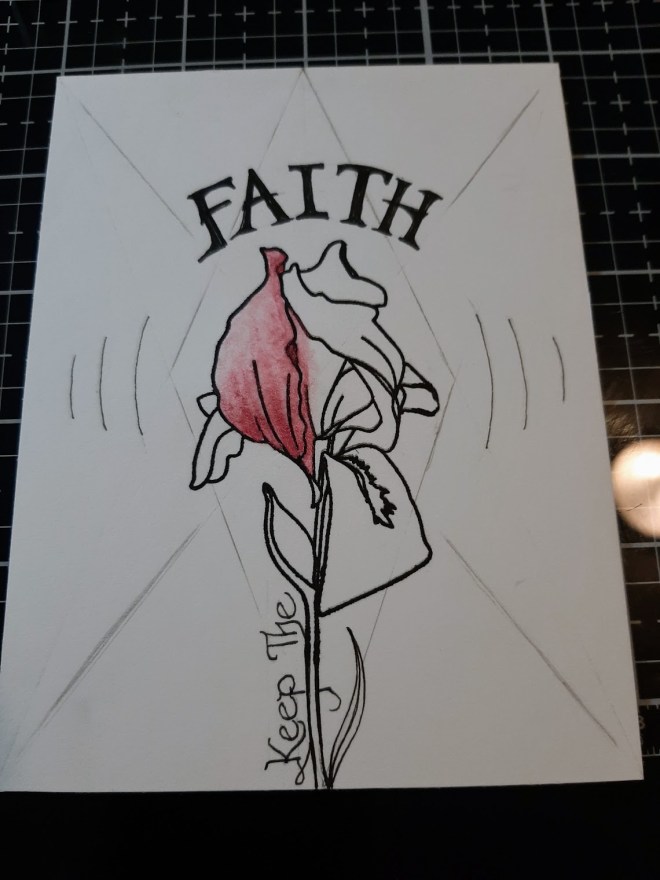Tutorial by Linda Fields
In remembrance of those lost, and of the kind hearted doing all they can to give, I dedicate this card, the last in the Three Virtues series, to the native people of Maui. God bless you. This neatly ties up anything I might have missed in the previous two tutorials with some added commentary.

All in the Details
Altenew has some of the most beautiful flower stamps you’ll find anywhere but I like to broaden their versatility by adding details that aren’t in the stamps. Here’s where Micron drawing pens and mechanical pencils become must have tools in your creative arsenal! This stamp I used did not have the extended stem, didn’t have the tendrils or the large leaf at the base. I drew those in and you can too with a little practice. Leaves are very fun to draw.

Notice the lines in the flower? I added these to give added texture, movement and depth. Because I used colored pencil over the petals, I really need to go back in with the pen and redo those lines to make them pop.
Building Your Toolbox
Let’s break down some of these tools. I used the silver Compass to create the circles. The curved lines guided me when writing the main word for each card like “Charity” but you can use a compass for many things like finding the center using arcs. A great tool!

The grey blob on my Glass Media Mat is called a Kneaded Eraser. As the name suggests, you must knead it like a little piece of dough before using it to “pick up” unwanted graphite. Use it to create highlights or to clear up your paper. It won’t mar or ruin the surface. When the eraser becomes too saturated, just knead the graphite away and start again! You can even form tiny arms for fine details so you leave the rest of your illustration alone. Amazing tool. Past the paint brushes and colored pencil is a white Tortillion or Blending Stump. It’s tightly rolled paper used to smear and/or blend pencil marks. You can tear away what’s old and sharpen what’s worn! Last but never least are the Micron Pen and Mechanical Pencil. The right tool for the job is important and these are must haves.
Colored Pencils
Who hasn’t heard of Prismacolor Colored Pencils? They used to be my absolute favorite for laying down color but I must say, my dedication has been persuaded by another! I recently purchased a wonderful set of colored pencils by Castle Arts. Besides being reasonably priced, they are incredibly soft with rich, vibrant colors that don’t break or crumble! The 120 set I got from Amazon was only $60 dollars and it came in a portable zipper case with pages that flip while holding every pencil in place. These pencils are amazing.
The Three Virtues
I’m in the last stages of certification in Altenew’s Educational Program (AECP) so I’ve been creating a lot of cards, my last being the Three Virtues set. I began with Hope, created Faith and finished with Charity. I used watercolors, colored pencils, inks, drawing pencils and pens. I love the finished set.
























